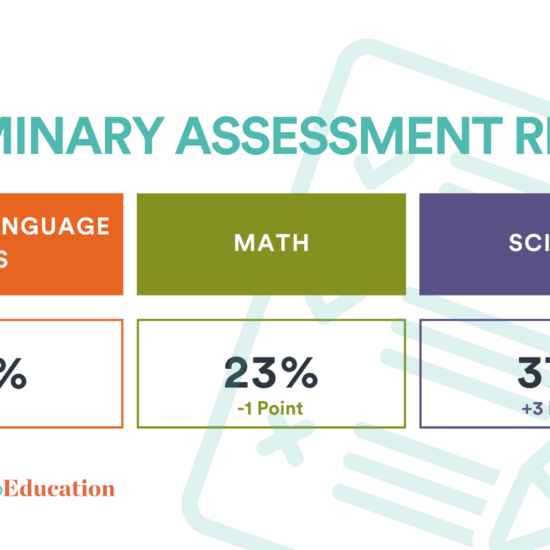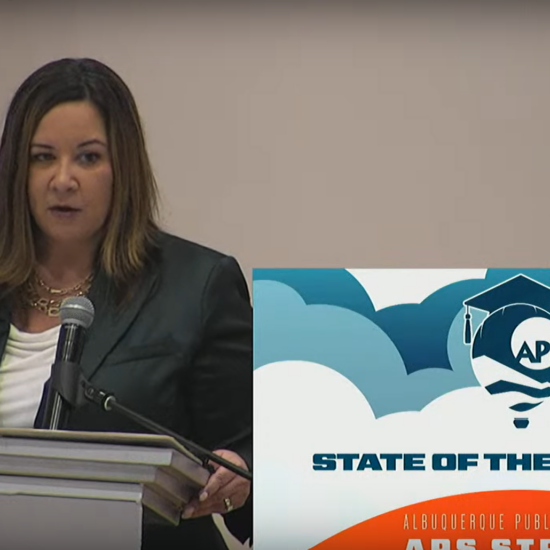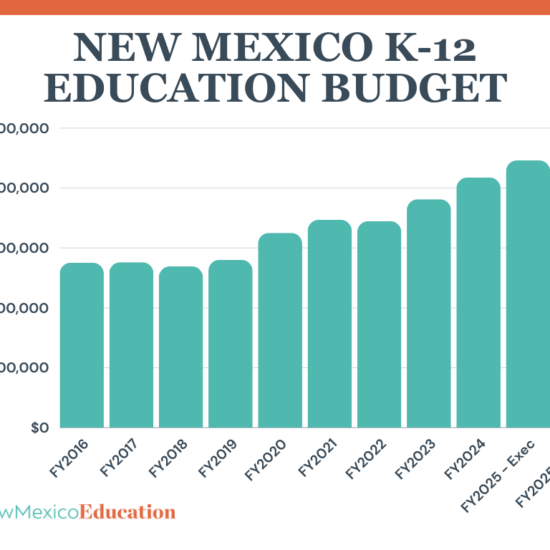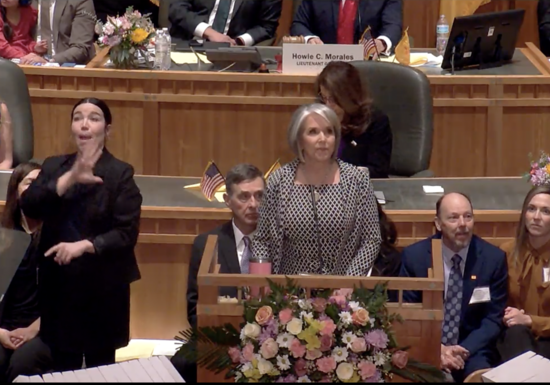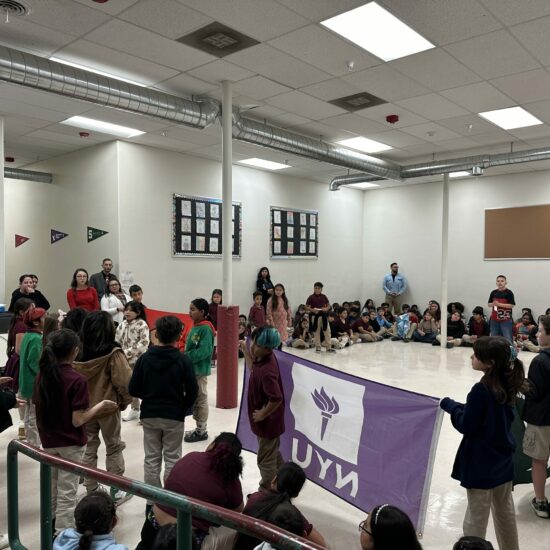
One year ago, I embarked on a journey that shifted my perspective and reignited my passion for storytelling. After five years of navigating the gritty atmosphere of crime reporting and local government affairs, I ventured into a field I thought was worlds apart: education journalism.
My days had been consumed by the drama of local politics, from heated debates over public safety to the intricacies of funding road maintenance in areas that have no tax base. I imagined the transition to education reporting would distance me from the bickering and complexities of local governance and politics.
Yet as I began learning more about education in New Mexico, I quickly realized I had not stepped away from the world of governance and policy-making but into the most important arena for it, where the stakes are immeasurably higher.
My name is Diego Lopez, I am a proud product of New Mexico’s public school system and an education journalist committed to unraveling the layers of this critical sector. As I reflect on my one-year anniversary as the reporter for New Mexico Education, I invite you to journey with me through the revelations, challenges, and hopes that have marked this path—a path that has led me to believe in the transformative power of education and the urgent need for collective action to uplift our schools.
These are the biggest takeaways I have from a year of learning.
There are Parallels
Transitioning from the world of crime reporting and local government coverage to education journalism, I anticipated a significant shift in the nature of my reporting. When it came to the complexities of crime stories and municipal politics, I grew accustomed to the relentless pace, the complex interplay of power and policy, and the tangible, immediate impact of decisions made by local officials.
Reporting on the intricate dance of local government–where the allocation of resources for a community pool or the debate over funding local museums could spark intense debates–I believed I was leaving behind a unique brand of chaos and entering a more straightforward field.
However, the reality of education journalism quickly became clear. The governance, policy, and community engagement is as rich and complex–if not more so–as any I had encountered in my previous beat. I began to see parallels between these worlds.
Far from the serene and straightforward domain I had envisioned, I found that the education sector mirrored the challenges of local government. Governing education, I learned, was filled with its own form of politics, power struggles, and policy debates that are no less significant than those I had reported on in the context of city councils and local governance.
In this new arena, I observed that school boards function with a level of intricacy similar l to that of city councils, tasked with decisions that shape the educational landscape for students and families. Superintendents, much like city managers, wield considerable influence over the direction and quality of education, guiding the operational and strategic facets of school districts.
The analogy extends further with the role of board presidents, who, akin to mayors, represent the public face and leadership of New Mexico’s 89 school districts.
I began to understand that the governance of education is not merely about academic curriculum or student performance metrics; it’s about managing a complex ecosystem that is as dynamic and fraught with challenges as any city or town under the purview of local government.
There is a Disconnect Between the Student Experience and the System’s Failure
My story in New Mexico’s public education system began with small, yet profound, experiences.
As a young Firebird at Chaparral Elementary in Santa Fe, the simplest lessons—like learning to brush my teeth in kindergarten—laid the foundation for a lifelong journey of learning and curiosity. These early years, though dim in my memory, have splashes of clarity with moments of joy and discovery, setting the stage for a deeper engagement with education as I grew.
The next chapter unfolded in Grants, where, as a Roadrunner at Mt. Taylor Elementary School, I navigated the complexities of adolescence.
However, like many of New Mexico’s students who have parents that move for work, my educational journey was not without interruptions. A brief stint as a Buccaneer at Los Alamitos in Grants was cut short as my family moved back to Santa Fe, marking a period of transition and adjustment.
At Capshaw Middle School, now closed, my identity as a Falcon took flight. It was in these hallways and classrooms that I fell in love with the rich culture in New Mexico’s history.
Returning to Grants, my tenure as a Pirate at Grants High School showed me the highs and lows of teenage life. From academic achievements and school theater and sports, to the trials of dating, my high school years were a time of personal growth against the backdrop of a broader educational landscape that I was only beginning to understand.
Unbeknownst to me at the time, while I was immersed in the typical rites of passage in high school life, a significant legal battle was unfolding that would cast a long shadow over New Mexico’s education system.
The Yazzie/Martinez Lawsuit, a pivotal moment in our state’s education history, was laying bare the state’s systemic failures to provide an adequate and equitable education to all students. Yet this critical conversation about the quality of our education system was a world away from my daily experiences.
My peers and I were unaware that our academic performance was being scrutinized in courtrooms to prove that the state had failed its students. We were students that were failed by our own system, but we never knew.
Reflecting on this, I realize the profound disconnect between the lived experiences of students and the systemic challenges being addressed at the highest levels of government. My journey through New Mexico’s public schools, marked by both fond memories and obliviousness to larger systemic issues, illustrates the complexity of education in our state—a system filled with dedicated educators and resilient students, yet struggling to meet its fundamental commitments to be transparent. I can’t help feeling a sense of anger. Why weren’t we informed about this, and what was ever done to make it right for my cohort, or the several before us?
As I transitioned from a student to a journalist, my personal history in the public school system has grounded my work in a deep understanding of the stakes involved. It’s a perspective that informs my reporting, driving me to uncover the stories that reflect both the challenges and the triumphs of education in New Mexico.
Progress is Being Made, but More is Urgently Needed
The most recent student proficiency data unveiled a bittersweet reality.
Reflecting on the state’s recent performance in English Language Arts (ELA) and Mathematics, the landscape of academic achievement is one of contrasts and challenges that demand our attention.
The modest uplift in ELA proficiency, marked by a reported four percentage-point increase, offers hope for the state and a testament to the hard work of educators and students alike. In 2022, only 34 percent of New Mexico students were proficient in ELA. The most recent data shows 38 percent of students are proficient. But even this data cannot be compared to previous years, because it was not based on the same metrics.
Yet, this achievement is shadowed by the stagnation and decline in Mathematics proficiency—a decrease of one percentage point that underscores a persistent struggle in an area critical for navigating the modern world.
I’ve seen the charts, the cold hard data. Since my graduation in 2017 student reading and math proficiency have only continued to fall, punctuated by COVID-19. This once again leads me to the same question, what are we doing to make it right for the students being left behind?
We All Have A Role To Play
As I reflect on the data and the narratives behind New Mexico’s educational performance, it becomes increasingly clear that the future of our state hangs in the balance. The findings are more than statistics; they are a call for urgent, collective action to uplift our education system.
The reality that some of our youth are being left behind is not just a challenge; it is an unacceptable crisis that demands a targeted response.
The essence of this challenge is not lost on anyone who understands the value of education in shaping individuals and, by extension, communities. Our students—New Mexico’s children—are the bedrock upon which the future will be built. They are future mayors, doctors, teachers, and business owners. Their success or failure is, in many ways, our own.
This is not a task for educators alone but a responsibility that falls on every New Mexican.
It requires a commitment from policymakers to prioritize education funding and innovation. I know this effort is expensive, but the future deserves the best we can give it.
Communities need to better support their local schools. We pay attention to our mayor and city councilors, let’s do the same with our school boards.
Businesses and nonprofits must continue investing in the future of our youth, with scholarships and on-the-job training for students.
New Mexico stands at a moment where the path forward couldn’t be clearer. Our kids deserve the ability to read, to do math. We need to ensure they are being equipped with these tools.
I am a student who graduated from the public education system at a time when courts ruled the system was failing. This last year has made me realize that there is no excuse for these failures.
Together, we must do better for our students.



